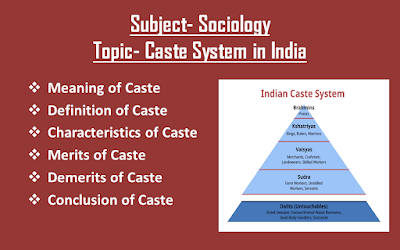Evolution of legal system in India
⇒ Indian law is a unique blend of English, Hindu, Islamic and other influences upon a culture which has a long history of 3000 years.
⇒ Indian legal system history can be divided into approximately four periods:
(1) Ancient Period
The Indian subcontinent is the cradle of one of the world’s oldest civilizations- the Indus civilization or the Harappan civilization, which thrived from 2700 to 1500 BCE, eventually went into decline over the next thousand years. As its influence waned, the Indian subcontinent was invaded by the Aryans, a group of people from Central Asia, who arrived around 1500 BCE and continued to shape the region's culture and history until around 500 BCE. When the Aryans settled in India, they themselves formed into three classes- the priest, the common people and the Warriors. The Dasas, the native inhabitants of the Indian subcontinent, were regarded as inferior by the Aryan invaders and were subsequently treated as subordinates, even slaves. This hierarchical distinction eventually evolved into the complex caste system that still exists in India today. Moreover, Sanskrit, the language of the Aryan invaders, became the language of the educated elite and the upper castes, further solidifying their dominance and influence over the indigenous population. From about 500 B.C. till the Muslim invaded India in the 12th century a series of Hindu Kings ruled India and Hindu civilization prevailed.
A hallmark of this civilization was the strict adherence to the principles of 'Varna Ashrama Dharma', which emphasized that individual spiritual liberation and social harmony depended on each person fulfilling their righteous duties, tailored to their stage of life and social role. In Hindu society, Dharma (righteousness) was the guiding force, encompassing legal, moral, and religious obligations, and was seen as the foundation for a just and stable community. The Hindu Law, one of the oldest legal systems in the world, has its roots in the ancient Vedas and the influential text of Manu's Manava Dharmashastra. Manu, a sage, compiled a comprehensive collection of religious, legal, and moral principles in the first two centuries CE. Over time, his work served as the foundation for numerous legal texts, giving rise to two prominent schools of thought: Dayabhaga and Mitakshara.
The two main schools of law thus developed are Dayabhaga and Mitakshara. The Dayabhaga school gained prominence in the Bengali-speaking regions of Bengal and Assam, while the Mitakshara school prevailed in the rest of India, shaping the legal and social landscape of the region. The two schools mainly differed in their laws of Inheritance and certain aspects of Hindu joint families.
In the ancient Hindu society, the disputes are mainly between groups of people but not among against the individuals. Mediation and conciliation are merely used to resolve the disputes and to cause justice. Thus, conciliation, consensus and non-violation are the traditional foundations of Indian Justice.
(2) Muslim Period
The 12th century marked the beginning of a long period of Muslim dominance, first in northern India and later, under the Mughals in almost all parts of the subcontinent. The Islamic law has become a part of country’s legal and social heritage. The Islamic law is derived from two main sources: the Quran and the Sunna of the Prophet Muhammad. Islamic law is based on the five doctrines which are collectively called Imam, meaning faith. The first doctrine is faith in absolute unity and Oneness of God. The second doctrine is the belief in Angels and their work as messengers and helpers of God. The third doctrine concerns Prophetic messengers. The fourth believe is in a final judgement, or doctrine of the last things. The fifth fundamental Islamic belief is in ‘divine decree and predestination’. Thus, the Islamic law is based on the religious beliefs as the Hindu law. The similarities between Islamic and Hindu legal systems are quite striking, reflecting the shared cultural and historical context in which they evolved. Both legal cultures used consensus and stressed the importance of maintaining harmony.
(3) British Period
In search of trade and conquest, European warriors and traders visited India at an early period. Of the many European invaders, British had exerted a greatest impact upon the country through their East India Company, a commercial venture founded by the private businessmen in London. The East India Company was founded in England with the goal of expanding British trade and commerce in foreign lands. In pursuit of this objective, the company's agents arrived in India during the reign of Jehangir (1605-1627) to establish a strong foothold and facilitate trade operations. This marked the beginning of the East India Company's presence in India, which would eventually evolve into a powerful force that shaped the country's history.
They established a few factories and slowly these have become the bases for the establishment of British rule in India. The Englishman realizing the importance of a sound judicial system in India undertook the task of evolving a judicial system at the very outset of threw administrative career.
An elementary judicial system was founded primarily in the three Presidency Towns- Calcutta, Bombay and Madras. Later, the Supreme Court was established at Calcutta in the year 1774. It was a court of English Law. In the course of time similar courts were established at Madras in 1801 and the Bombay in 1823.
(4) Modern India
India's independence led to significant changes in its judicial system, with the Supreme Court replacing the Privy Council as the highest court of appeal. Today, India's judicial system is a hierarchical structure of courts, with provisions for appeals from lower courts to higher ones. The Supreme Court, the apex court, upholds a high standard of justice and ensures a uniform approach to the law across the country, promoting a cohesive and fair legal framework for all citizens. This system allows for a gradual and thorough review of cases, ensuring that justice is served and the law is applied consistently.
Watch video on YouTube






